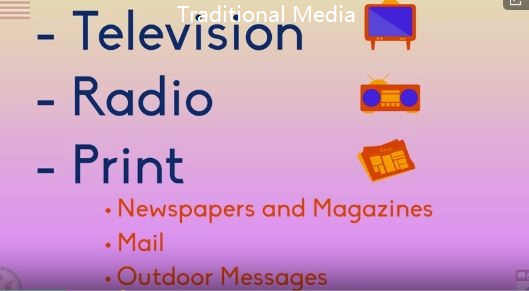Facades is the term Robert Cottingham uses for his pictures in which signs predominate. In these works, letters and words operate on more than one level.
facade
US [fəˈsɑd] UK [fəˈsɑːd]
1, the front of a building, especially one that is large or impressive 外表,外观
2. a false appearance or way of behaving that hides what someone or something is really like
虚伪,浮面,(掩饰真相的)门面
The effort and techniques Cottingham describes are not limited to commercial signs. Mass media in general promote consumption.
Why does an evening news broadcast include mostly negative stories? Why do cigarette commercials depict young people enjoying a healthy lifestyle? Why do political campaign messages show candidates next to the flag? Answering these and similar questions requires the ability to analyze, not just absorb, mass media. To be media literate, analysis must go beyond content and address issues of form and sponsorship.
Given the significance of the visual component of mass media, art can serve as a useful resource in development of media literacy skills. In particular, the art of Robert Cottingham can introduce a discussion of media literacy in these areas:
- Gender Stereotypes
- News
- Spin
Although Robert Cottingham used a Tom McAn shoe store sign to inspire Women-Girls (below left), when you see the word "women" in neon lights, what is your first thought? Exotic dancers? Pornography? These notions may come to mind because of pervasive use of gender stereotypes in mass media. Stereotypes are generalizations, often exaggerations, that characterize all members of a group with common characteristics.
Compare this work with Cottingham's original photography (below right). Just as Women-Girls, when taken out of context, does not reflect the reality of the situation, stereotypes deny the individuality of the depicted person.
Advertisements often promote gender stereotypes. What products are advertised in magazines or during television programs aimed at women? At men? Does this suggest that women make purchasing decisions about household products and men make decisions about automobiles? By using the human body as a billboard for advertisement slogans, showing only pieces of a body or subliminally suggesting sex acts, gender stereotypes also can dehumanize.
Look at the poster Jobs for Girls & Women. What does this poster say about the context in which it was created?
Compare Robert Cottingham's Barrera-Rosa's (above) with his Don't Walk (below). Barrera-Rosa's depicts an urban street scene vibrant with multicultural imagery. Don't Walk is an accurate detail of the larger scene. Does each image convey the same meaning? Cottingham has chosen different frames of reference for the same subject.
Given the constraints of the medium and program format, television news stories generally consist of brief narratives that are read to the viewer along with short video clips. In addition to a brief presentation of content, news stories influence our thinking by their omissions. Since news programs are supported by advertising revenues that depend on viewer ratings, what frame of reference is generally selected?
It is natural to believe your own eyes and ears; however, don't walk into the trap of assuming that what is presented on a televised news show is the whole story.
What is "spin"? Commonly associated with political public relations, spin can be characterized as presenting an issue in a perspective most favorable to a given point of view. It can be created by presenting information favorable to the perspective and by omiting or rebutting unfavorable information. It can also be enhanced through the use of images. Visual media use color, shape, lighting, and size to evoke emotional responses and convey latent messages by arousing an emotional response in the viewer.
Consider the Cottingham's lithograph Art (below). How does it make you feel?

Warm colors such as red, orange, and yellow tend to make us feel positive and secure. Cool colors like blue and violet make us feel calm. Gray and black make us feel sad and uncomfortable. Similarly, a bright image evokes feelings of security and happiness, while a dark image arouses fear and apprehension.
Positive feelings of progress and enlightenment can be created by diagonal lines running from bottom-left to top-right. Left to right movements are perceived as natural and harmonious. Conversely, diagonals from top-left to bottom-right induce feelings of failure and descent, and movements from right to left increase tension. Camera angle is particularly important in portrayal of people. A person filmed from low angle appears larger, more important and powerful, while a person filmed from a high angle looks small, weak, and vulnerable.
The connotative meaning of props such as flags, balloons, jelly beans, and religious icons are symbols reinforcing the latent message in an image.
Cottingham describes the circumstances that lead to the creation of Art:
In the summer of 1970, I was wandering around Los Angeles photographing movie marquees. Downtown, on a forgotten back street, I discovered the Art Theater, a small run-down movie house. Its ticket-taker was standing outside in black jeans and a T-shirt. He gave me permission to change the film in my camera inside the theater, away from the afternoon glare. I came out and took one photograph of the first three letters of the marquee. This was the basis of my 1971 painting, and my 1992 lithograph.





































